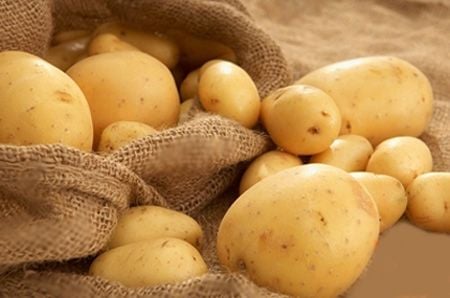It’s inevitable that even the most experienced home cooks and professional chefs will occasionally over-season their dishes, resulting in an overly salty meal. While a salty dish can affect its flavor, it can also be harmful to your health if consumed regularly. However, there’s no need to worry as there are several simple yet effective tricks to rescue an overly salty dish right at home. Let’s explore these quick and clever solutions below!
1. Add Water or Stock
This is the most common and easily applicable method. When your soup, stew, or braised dish turns out too salty, simply add some plain water or unsalted stock to dilute the saltiness. Note that after adding liquid, it’s best to simmer the dish for a while to allow the flavors to meld again. If your dish has limited liquid, such as stir-fries or reduced sauces, add a small amount of water and continue cooking to reduce the saltiness without making the dish bland or affecting its consistency.

2. Use Raw Potatoes to Absorb Salt
Raw potatoes are a savior when it comes to drawing out excess salt. Simply peel and slice one or two potatoes, then add them to your soup, stew, or braise. Simmer for about 10-15 minutes, allowing the potatoes to absorb excess salt from the broth. Remove the potatoes before serving, and you’ll find that the dish is significantly less salty. This method works especially well for soups and stews without altering their flavor profile.

3. Add Sweet Vegetables or Bland Foods
If you’re preparing a stew, soup, or braised dish, you can incorporate naturally sweet vegetables like carrots, pumpkin, or onions, or even tofu and mushrooms. These ingredients not only help balance the saltiness but also add depth of flavor to your dish. Additionally, they absorb some of the excess salt, making the dish more palatable.
4. Use Milk or Coconut Milk (for compatible dishes)
For curries, creamy soups, or braised dishes with a fatty profile, such as Thai-style meat stews or vegetarian dishes, consider adding a small amount of unsweetened milk or coconut milk. The fat in the milk helps to mellow out the saltiness while enhancing the richness and creaminess of the dish. However, use this technique sparingly to avoid altering the dish’s intended flavor profile.
5. Add Sugar, Vinegar, or Lemon Juice for Balance
In the culinary arts, saltiness can be tempered with sweetness or acidity. If your dish is mildly salty, you can add a touch of sugar (granulated, lump, or honey). For soups or stir-fries, a few drops of lemon juice or vinegar can also make the dish more enjoyable. However, this method should only be used for slightly salty dishes, as adding too much sugar or lemon juice can throw off the balance of flavors.
6. Separate the Broth and Cook a New Unsalted Batch
If your dish is too salty to be rescued by the above methods, you can try separating the broth or sauce and cooking a new, identical unsalted batch. Then, combine the two, halving the salt concentration. This technique works well for meat stews, soups, or braised dishes.
7. Serve with Plain Rice, Bread, Noodles, or Steamed Vegetables
If you’ve accidentally oversalted a dish and can’t make significant adjustments, consider serving it with plain rice, bread, noodles, or steamed vegetables. These bland accompaniments will help neutralize the saltiness, creating a more harmonious meal. This is also a common tactic used by home cooks when there’s no time for re-cooking.
8. Learn from Experience and Prevent Over-salting
- Add seasoning in small increments, tasting as you go, to avoid using too much salt or soy sauce at once.
- Use a clean spoon for seasoning to avoid miscalculating the amount due to food residue on the spoon.
- Pay attention to inherently salty ingredients like soy sauce, fish sauce, pre-seasoned foods, or processed foods.
- Add salt/soy sauce towards the end of cooking, especially when using ingredients that naturally release salt during cooking (e.g., salted meat or bones).
Over-salting a dish doesn’t have to be a disaster. With the simple and effective tricks mentioned above, you can rescue your dish and turn it into a delicious and healthy meal. More importantly, you’ll gain valuable experience to improve your cooking skills and create well-balanced, flavorful, and nutritious meals for your family.
“How to Spot the Difference Between Real and Fake Beef: Insights from a Seasoned Trader”
Beef is a delicious and familiar treat, but it’s not always easy to navigate the maze of counterfeit foods to find the real deal. With a few simple tips from seasoned sellers, you can instantly become a pro at distinguishing between authentic and fake beef. Ensure your family’s safety and indulge in a tasty, worry-free feast!
The Magic of Salt: How a Pinch of Salt Can Transform Your Beer
When you have leftover beer, don’t be too quick to pour it down the drain. Believe it or not, those half-empty bottles can be surprisingly useful around the house. From gardening to culinary creations, leftover beer can be your secret weapon for a variety of tasks and treats. So, before you toss those extras, take a moment to explore the unexpected ways it can be used.



































